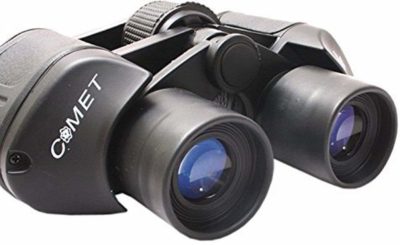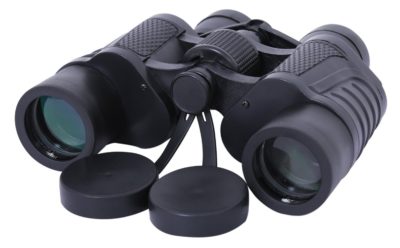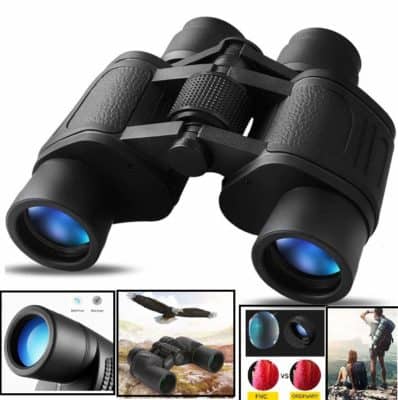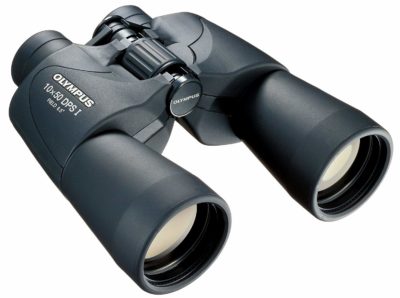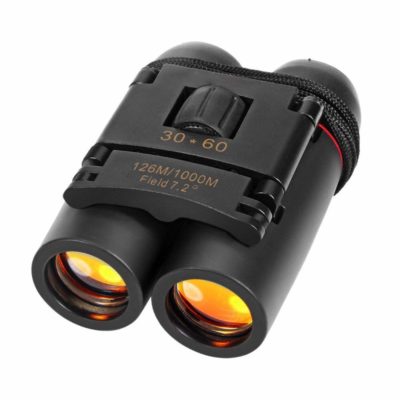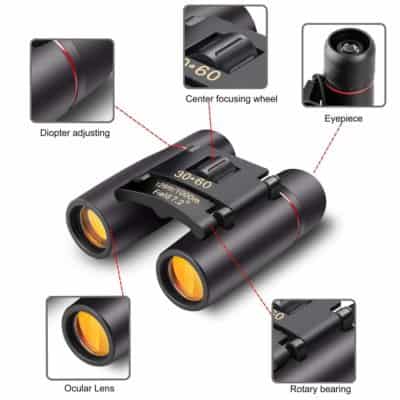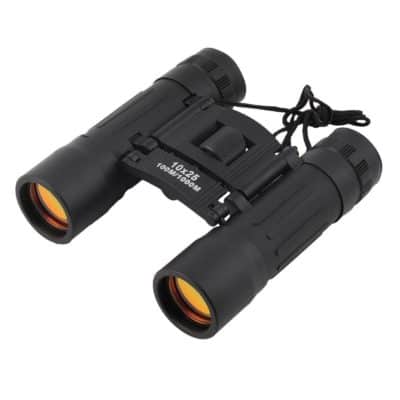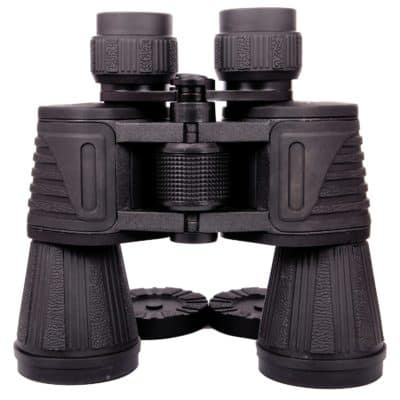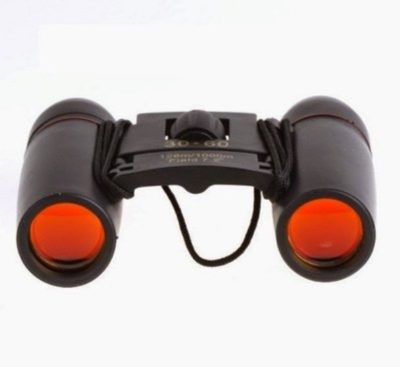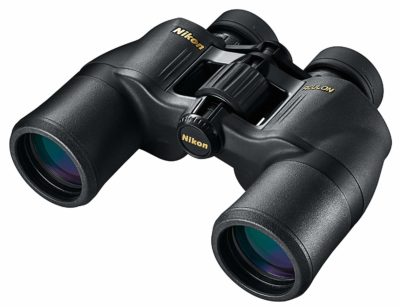10 Best Binoculars
A pair of awesome binoculars let you observe the world with great details. While bird watching binoculars are the most loved tool, they can also be used for stargazing.
However, getting a hold of the right device isn’t as easy. We have tested numerous of them and listed some of the best.
In this article, you will find the working of binoculars, factors influencing the pricing of binoculars, types of lenses, buyer’s guide, and answers to the frequently asked question to help you make the right decision from our reviews about the 10 best binoculars
10 Best Binoculars
| Product | Best Price |
|---|---|
Powerful Lens, Superior Craftsmanship | |
Solid Construction, Top-notch Range, And Focusing Abilities | |
Sleek, Impressive Lens And Prism | |
Built For Strength And Top-notch Performance | |
Portable, Great Functionality For General Viewing | |
Portable And Powerful | |
Simplistic Design, Powerful Set Of Prisms | |
Rugged, Solid, Powerful Optical Features | |
Portable, Powerful Lens | |
Great Design, Powerful Functional Components |
The Working of Binoculars
Light bends when it travels from air to another material such as glass or water. This is known as refraction.
This phenomenon is central to the general functioning of a lens. This is the key component of binoculars.
If you want to see an object from a sizeable distance clearly, you can utilize two convex lenses arranged so that one is in front of the other. The front-placed lens captures light rays from the object and converges them to come up with a focused image behind the lens at a short distance.
Since it’s the closest lens to the object in question, this is also an objective lens. The second lens captures the image formed by the first lens and then magnifies it.
Telescopes adopt this arrangement and put it in a closed tube. You can come up with an improvised telescope by using two magnifying glasses in a cardboard tube.
There is one crucial aspect of binoculars you need to be aware of.
When light rays from a distant object hit a convex lens, they tend to crossover. This makes the resultant image to be formed upside down. The second lens doesn’t solve the problem.
This is where another critical component known as the prism comes in. The binocular features two wedge-shaped glasses known as prisms, which rotate the image at a 180-degree angle, turning it upside down.
This makes the image to retain its original orientation. Each prism rotates the image through 90 degrees to contribute to the 180-degree rotation.
Prisms account for most of the binocular’s weight and size. A simplified form of binoculars, field glasses, eliminate the prisms, and use the lenses only.
This makes them considerably lighter and smaller. However, the quality comes out lacking when compared to the standard Binocular.
What Influences the Pricing of Binoculars?
There are some key factors that dictate the general pricing.
The manufacturing industry is huge. Many manufacturers are in fierce competition towards providing the best devices with the most crystal clear image.
Prevalent issues experienced by most users relate to brightness, color, field of vision, fringing, and aberration. These problems intensify in challenging conditions such as low light and high humidity.
As a rule of thumb, the general image quality you get in various conditions directly relates to the overall price.
Here are the key factors behind the pricing of different models.
The Type and General Quality of the Prism and Lens
Len’s and prim’s significance cannot be over-emphasized. There is a lot that goes on inside the prisms and lens.
Here is a summary of the key things you need to know about these components and how they relate to pricing.
Types of prisms
There are two main types of prisms in Binoculars. These are designated as BK-7 and BAK-4. BK-7 prisms are commonly featured in lower-priced models, while BAK-4 prisms are featured in high range binoculars. The reason, they come in with a higher refractive index.
BAK-4 prisms also harbor differences in quality depending on the manufacturer’s materials and design.
Types of Glasses used in Lenses:
- Standard Glass.
There are two main types of glasses that offer different qualities when it comes to refraction.
- Extra-Low Dispersion Glass
This is the most powerful, and it’s commonly featured in high-end models. The key advantage of this type of glass is that it assists in reducing chromatic aberration.
This refers to lens incapacity to focus all the relevant colors to one point, leading to color fringing.
Extra-low dispersion glass is also commonly called high definition glass.
- Fluoride Glass
These incorporate fluorite into the structure. They generally retain the properties of ED glasses, but they blend in fluorite to add some extra-low dispersion optics.
Coatings
As the light is moving through the binoculars, it has to pass through different surfaces of glass and lens. An estimated 5% of the total light is lost as it passes through each lens or glass.
This, in turn, affects the overall image quality. Thus different manufacturers have come up with a variety of ways to reduce the loss of light.
Special coatings are added to the surfaces. However, some common terms are used to provide a general idea of the overall capacity.
- Coated: This refers to a single coating placed on the lens surface. Magnesium fluorite is a key compound used in the formula.
- Fully Coated: This refers to the presence of a coat on all the involved surfaces(lens and prism)
- Multi-Coated: This refers to the presence of multiple coats on at least a single surface.
- Fully Multi-Coated: Multi-coated on all the surfaces.
Engineering
The quality of the engineering used in building the model is often a huge influence on the overall pricing. A binocular can feature the best glass and coating on the market but still fall short of the highest image quality.
This can be the case due to the manufacturer’s failure to put all the components in the best possible way. For this reason, it’s always recommended to carry out some research into the company’s reputation.
The best compact binoculars feature a combination of reliable construction and durability.
Types of Lenses
The lens can be classified into concave or convex based on its shape. A convex lens is shaped like a lentil, where the middle is thinner than the peripherals.
Concave Lens is the complete opposite.
Convex Lens
When light rays encounter the convex lens, they bend inwards or towards the center of the lens, as if they are being sucked in. These direct light-rays are wide apart towards a single point, known as a focus.
It’s commonly known as a converging lens as it “converges” or brings different light rays together. This ability gives them one crucial property, making different objects to appear more prominent.
This is why they are used in various instruments such as magnifying glasses and standard microscopes.
Concave Lens
The concave lens also has an opposite effect on light rays. They bend the light rays away from the center.
In other words, they tend to spread out/diverge light rays from a central position.
This is why they are also known as “diverging Lens.” Through this ability, they can also make an image appear more significant on the opposite end.
Thus they are commonly used in projectors to make the image from the film spread out and appear larger on a bigger screen.
Essential Things to Look for When Buying a Binocular
Once you get into the market for your own Binocular, you are likely to come across appealing product descriptions, which are specially made to take you to a quick purchase.
The diversity of models makes it even harder to make your choice, especially when you are relatively new to these gadgets. This section is about empowering you to know the key factors you need to know before making any decisions.
Magnification
If you’ve seen a binocular’s specs list before, you might have noticed that almost all of them come with a two-number designation such as (7×42) or (8×30).
The two numbers represent two main functional parameters: magnification and objective lens Diameter(ODL).
The first number represents the magnification, whereas the second number represents the objective lens diameter. Magnification refers to the number of times that the Binocular can magnify the object’s image.
As a recommendation, Binoculars with magnification within the 7-10x range offer the ideal choice for standard usage.
You can go for those rated above 10x if you’re in for more power. But they tend to come in bulk and often need a tripod to keep things stable.
Objective Lens Diameter
As already pointed out above, the objective lens diameter is represented by the second number. As the name suggests, it generally describes the size of the objective lens in millimeters (mm).
For instance, a 7×40 binocular would have an OLD of 40mm.
The size of the lens is key because it determines the magnitude of light that is captured by your binocular. The bigger the OLD, the higher the amount of captured light, which translates into better image quality.
As a recommendation, binoculars with OLDs that range between 30-42mm generally offer the ideal quality for regular usage.
You can also choose to go beyond the range. As the quality will significantly improve, you will have to be prepared to handle the accompanying substantial weight.
Mini binoculars typically fall below 30mm. Their smaller size and power makes them ideal for devices meant for kids.
Therefore, if you are considering getting something for the little ones, this range offers an ideal feature set.
Field of View
The term “Field of View (FOV) ” refers to the visible area captured by your binocular. It is directly correlated with how much your device can capture as it defines the size or area it can cover.
The field of view is typically measured at 1,000 yards.
In general terms, as the FOV increases, the magnification decreases. Additionally, the FOV can vary among binoculars with the same magnification.
This is because other factors apart from magnification can heavily influence the FOV, including the materials used and engineering quality.
For instance, as we go through the models, you will notice that though some models have the same magnification and OLD, they may come with significantly different Field of View.
Other manufacturers may choose to indicate the Angle of View instead of the Field of View.
The two parameters stand for the same thing, but you may need to convert the AOV to FOV if you are more comfortable with the latter. This can be done by multiplying the AOV by 8 degrees.
Close Focus
This parameter describes how close you can get to the object and still manage to develop a good picture. Expectedly, smaller values mean better performance.
Any close focus of under 2 meters or 6 feet is good enough. However, it’s also great to compare models within an identical magnification range.
Prisms
There are two main styles of prisms. These are porro and roof prisms. Let’s have a quick look at the key differences.
Porro
These prisms re-orient the image by subjecting light rays through a zig-zag pattern before reaching the eye. They are generally common in older models and are quickly being replaced by the newer roof prisms.
They are cheaper than roof prisms. On the downside, they can be heavy and need a lot of space.
Thus they are associated with the older and bulkier models.
Roof Prisms
These eliminate the zig-zag pattern and adopt a more direct way of manipulating the image. They generally need less space and are lighter than porro prisms.
However, the internal mechanism is more complicated. This makes them more appropriate for bird-watching and hunting sessions.
Waterproof Properties
Binoculars for outdoor usage come with a natural risk of exposure to water through rain, fog, or snow. This makes it imperative to consider how much protection your binoculars offer.
100% waterproof binoculars are completely sealed for any sort of water exposure. Most high-quality binoculars also incorporate fog-proof properties, which allow them to avoid fogging in highly humid conditions.
The best binoculars for hiking and other outdoor adventures are generally waterproof.
These binoculars are filled with nitrogen, as opposed to oxygen, which is key in fog build-up. This is why you will find terms such as “nitrogen purged” or “nitrogen filled” connected to various models.
The Focusing Mechanism
Binoculars incorporate different focusing mechanisms, which have varying degrees of difficulty when it comes to usability.
This is crucial as it affects how fast you can get a clear view of an object. This is important, especially during wild adventures, where things can happen so quickly.
Some good designs come with a single central focusing knob, which may be placed conveniently under your index finger. The key questions to ask yourself are:
- Are the knobs smooth to adjust or difficult?
- Can I focus quickly enough to get a clear view of a moving object?
Eye Relief
This refers to the distance that the device’s eyepiece can be held from your eye while still affording a clear view.
This is important, especially when you put on eyeglasses. There has to be a practical distance between the eye and the eyepiece to accommodate the glasses.
Warranty
Some companies provide for a lifetime warranty, but that doesn’t involve damages from accidental drops.
Selected brands cover accidental drops, but for a limited amount of time. Most of them come with a one year warranty for manufacturer related defects.
Size, Weight, and General Feel
Search for clear answers to these questions:
- Am I comfortable with the weight?
- Can I comfortably carry it around all day?
- Is it a food fit for my hands?
- Are my fingers relaxed?
- Can I easily access all the necessary controls?
Bear in mind that the weight and size increase with the OLD. This is why 42mm binoculars are the most preferred as they provide high image quality and high comfort.
Medium-sized binoculars also offer great options in cases where weight is a primary concern. These typically fall within the 30-35mm range.
Build-up and Design
As you would expect, different models come in different designs with different materials used in the construction. There are three main things you need to look for.
Firstly, consider the quality of material used in the construction. Most durable binoculars incorporate light metals such as aluminium to keep them both light and easy to carry around.
Some may use hard plastic such as ABS, which also has excellent resistance properties at a very lightweight.
Secondly, you need to look at the construction quality. Established and credible manufacturers always produce solidly constructed devices that can easily withstand an accidental fall.
Take your time and consider the quality of joints within the structure and how different parts are woven together to form one solid unit.
Thirdly, you need to look closer and see if the device incorporates any comfort features.
Great tools will always come with extra features such as rubberized handles, eyecups, and neck straps to keep things as convenient as possible.
Top 10 Binoculars
1. Krevia Comet Binocular – Powerful Lens, Superior Craftsmanship
Heading the list is the Krevia Comet Binocular. It has proven to be a good specimen of reliability and power, as demonstrated by a remarkable feature set and impeccable review ratings.
The Binocular features an all-black, metallic construction that adds an air of solidity and reliability to the standard design. In terms of size, the frame’s dimensions measure at 18 x 16 x 5.5 cm.
The weight is also practical for most people, striking a rather small 480 grams on the beam balance.
- Maximum Magnification – 8X
- Objective Lens diameter – 1.57in / 40mm
- Secondary Mirror Diameter – 25mm
- Focusing System – Center
- Prism Type – BAK4
- Eye Relief – 0.67in / 17mm
- Exit Pupil – 0.15in / 3.7mm
- Field of View @ 100m – 420ft/130m
- Maximum Focusing Distance – 12 ft
- Impressive magnification and Field of View combination – The magnification and OLD provide a powerful device for many use cases.
- Powerful prism – It comes in with the most powerful prism along with great engineering for enhanced quality.
- Durable – It comes with solid construction and high-quality material.
- Comfortable – It features a medium weight and size, along with other convenience features such as a great grip and sizeable eye relief.
- It lacks waterproof properties.
2. Kurtzy Binocular – Solid Construction, Top-notch Range, And Focusing Abilities
The Kurtzy Binocular furnishes another example of a great device built for power, durability, and comfort. Let’s take a closer look.
The device comes in adorned with an all-black rugged construction. It is carefully detailed to provide a good hand grip.
It weighs at just 764g, as the key dimensions measure at 18(L)x14(B)x5(H)cm.
- Objective Lens diameter – 1.57in / 40mm
- Eyepiece diameter – 22mm
- Focusing System – Center
- Prism Type – BAK4
- Field of View @ 1000m – 188ft/68m
- Coating – Multi FCM green optical coated.
- Powerful lens – It features a top-of-the-range magnification and objective lens diameter.
- Great prism – It also incorporates a powerful prism for enhanced image quality.
- Reliable – It features great build material and overall construction.
- Ergonomical – It comes with all the amenities to facilitate a secure grip and comfortable viewing.
- The relatively hefty price tag
- It’s not completely water-proof
3. Cason Binocular – Sleek, Impressive Lens And Prism
This is popular among outdoor enthusiasts. It boasts of a top-notch lens, prism system, and general design.
The design doesn’t fall short of the level of solidity and comfort seen in the previous models. An all-black, medium-sized casing with an ergonomic grip on each side provides a rare combination of slickness, comfort, and durability.
Weighing at just 730g, the frame measures 18.5 x 14.5 x 7.5 cm in terms of dimensions.
- Maximum Magnification – 8X
- Objective Lens diameter – 1.57in / 40mm
- Eyepiece diameter – 20mm
- Focusing System – Center
- Prism Type – BAK4
- Eye Relief – 0.67in / 17mm
- Exit Pupil – 0.15in / 3.7mm
- Field of View @ 1000m – 420ft
- Coating – Multi-coating porro prisms and FMC objective lens multilayer coating.
- Water resistance – IPX4
- Top-notch lens properties for powerful magnification – The lens have a top-notch magnification, diameter and are multi-coated for more light-capturing efficiency.
- Top-notch prism system – The multi-coated prisms afford a highly efficient system for greater image quality.
- Sleek, durable construction – It features an attractive finish, along with solid construction.
- Comfortable – It is easy to use and features a comfortable size and grip for prolonged usage.
- Highly-priced.
4. Olympus Magnification Binocular – Built For Strength And Top-notch Performance
Most critics have labeled the Olympus a perfect combination of efficiency and design craftsmanship.
The device combines solid construction, usability, and sleekness that’s rarely seen across the board. The device’s all-black shell measures 17.8 x 19 x 6.4 cm in size, while the weight lingers at around 855g.
- Maximum Magnification – 10X
- Objective Lens diameter – 50mm
- Focusing System – Center
- Prism Type – Porro, BAK- 7
- Angle of View @ 1000m – 6.5 degrees
- Exit Pupil – 5mm.
- Eye Relief – 12mm.
- Coating – Monolayer
- Extra features – Special coating for UV protection
- Impressive lens – It comes with high magnification and larger OLD for greater light efficiency.
- Powerful prism – The prism system affords enhanced light processing for better image quality.
- Durable – It incorporates high-quality material in a cohesively built structure.
- Extra safety features – The addition of a UV coating enhances the device’s safety profile.
- A relatively hefty price.
- It’s relatively heavy when compared to most models within the same price range.
5. Mahotsav Marketing Professional Binoculars
The Mahotsav Marketing HD binoculars are professionally designed for bird watching, outdoor adventures, star gazing, hunting, concerts, and much more. Therefore, this is a complete package.
It adopts unique Japanese cherry blossom advanced optical technology, making it compact and lightweight. The binoculars are easily adjustable for adults and kids.
- Field of View – 126m/1000m
- Field – 7.2 degrees
- Focusing type – Right eyepiece fine-tuning
- Objective Lens Coating – Multi-layer optical blue film with eye protection and light enhancement
- Magnification – 30X
- Weight – 0.36lb
- Eyepiece Coating – Anti-reflection optical film
- Low Night Vision- You can easily view in low light and long rage objects as it offers maximum brightness.
- Compact- It is foldable, lightweight, compact, and portable, making it your best companion anywhere.
- Carrying case- It comes in a carrying case where you can safely store it.
- Enhanced optical film- The enhanced optical blue film comes with eye protection and light enhancement for clear visibility.
- Economical- Though it offers numerous features, it is priced nominal.
- No negative points observed so far.
6. Flipco Binocular – Portable And Powerful
If you are looking for a highly portable binocular that doesn’t sacrifice anything, this model should provide a fitting profile. It is known for being one of the ideal combinations of power and practicality in adventurers’ circles. Let’s get into the details.
The device comes in an ultra-portable, all-black frame with solid construction. Measuring at just 10.8 x 7.8 x 4.8 cm in dimensions and 250 pounds in weight.
The incredibly small size renders the device a comfortable fit in one hand.
- Maximum Magnification – 30X
- Objective Lens diameter – 60mm
- Focusing System – Center
- Prism Type – BAK4
- Field of View @ 1000m – 126mft/7.2 degrees.
- Coating – Multi-coating porro prisms.
- Powerful – It features one of the most powerful magnifications on the market, along with a wide lens diameter.
- Portable – It has one of the smallest frames for easy handling.
- Durable – It’s built with high-grade material for the frame, as well as the interior components.
- Affordable – It is modestly priced for its abilities.
- Quality could have been better.
7. Cartshopper Binocular – Simplistic Design, Powerful Set Of Prisms
The Cartshopper presents a compact binocular with a functional feature set of a full-sized premium device.
The device adopts a compact, all-black design with a solid feel that’s typical of devices within its price range. It is portable in every sense of the word, as evidenced by a weight of 216 g. The dimensions measured at 11 x 6.5 x 4 cm.
- Maximum Magnification – 10X
- Objective Lens diameter – 25mm
- Eyepiece diameter – 22mm
- Focusing System – Center
- Prism Type – Roof
- Eye Relief – 10mm
- Minimum focus distance – 3m
- Exit pupil diameter – 2.625mm
- Field of View @ 1000m – 101m
- Coating – Fully coated.
- Advanced Prism system – It compensates for a smaller OLD by incorporating a powerful roof prism.
- Great magnification properties – It maintains the magnification capacity of high-end devices.
- Durable – It features a solidity built aluminium alloy frame.
- User-friendly – It features a comfortable rubber grip and conveniently designed controls.
- Affordable – It comes with a friendly price tag for most budgets.
- It has a low ODL
8. Gor Power View Binocular – Rugged, Solid, Powerful Optical Features
The GOR PowerView Binocular affords a great device for those in need of the perfect combination of power and durability. Rugged construction is complemented by a powerful lens and prism. Let’s take a look.
From the first glance, it’s easy to notice that the binocular was built for solidity due to a rugged, all-black, and sizeable construction. The shell measures 22 (L) x 20.9 (B) x 7.1 (H) in size, while the weight lingers at around 850 grams.
- Maximum Magnification – 10X
- Objective Lens Diameter – 50mm
- Focusing System – Center
- Prism Type – Porro, BK-7
- Eye Relief – 10mm
- Minimum Focus Distance – 3m
- Exit Pupil Diameter – 7mm
- Field of View @ 1000m – 96m
- Coating – Fully coated(FMC).
- Top-of-the-range lens – The lens diameter is unarguably one of the highest on the market, thus promising enhanced efficiency.
- Top-notch Prism – The prism is fully coated and efficient enough for high-quality images.
- Great construction quality – It is solidly built and features high-resistance material.
- Easy to operate – It comes with all the necessary comfort features to keep it practical during prolonged periods of usage.
- Relatively bulky
- Expensive
9. Sakura Binocular – Portable, Powerful Lens
The Sakura Binocular offers a commendable option if you are looking for a device you can easily hold in your hand. It gives a clear view, with reasonable range and focusing ability.
The binocular comes in an all-black, compact shell that measures an incredible (90 x 60 x 40mm) and 168g in terms of size and weight, respectively. The structure is also foldable and features rubber handles for easy handling.
- Maximum Magnification – 30X
- Objective Lens diameter – 60mm
- Focusing System – Center
- Eye Piece Diameter – 15mm
- Angle of View @ 1000m – 7.2 degrees
- Impressive lens properties – Rated at 30x60mm, it virtually provides one of the most powerful lenses on the list and the market.
- Portable – It comes in an ultralight and small-sized frame.
- Durable – It’s solidly built with highly resistant material.
- Convenient – It’s easy to manipulate and features simple controls.
- It lacks water-repellant properties for heavy water exposure such as rain or immersion.
10. Nikon Aculon A211 – Great Design, Powerful Functional Components
Though relatively high-priced, the Nikon Aculon offers a convenient design that doesn’t fall short of the expected functionality.
A detailed all-black shell affords a convenient rubber-coated grip for each hand while maintaining a medium weight and size for most users. The weight lingers at around 650g, while the size measures at 14.5 x 18.5 x 4.2 cm.
- Maximum Magnification – 8X
- Objective Lens diameter – 42mm
- Focusing System – Center
- Prism Type – Porro, BAK-4.
- Coating – Multi-coated lenses
- Powerful lens – It features a large objective lens diameter for greater efficiency.
- Powerful prism – It incorporates a powerful porro prism for enhanced image clarity.
- Impressive construction – The build quality is both visually appealing and durable.
- Comfortable – It’s easy to handle through a convenient shell design and incorporates easy-to-use controls.
- Expensive
Frequently Asked Questions
1. What’s the best magnification for Binoculars?
For general use cases, magnifications within the 7-10× range offer the best quality.
However, if you are considering for special use, you can consider more powerful lenses beyond the standard 10× mark.
2. What’s the best Binocular model in the current market?
The best models currently are
Olympus 118670 Binocular
Krevia Comet Binocular
Cason Professional Binoculars
Flipco Binocular
Nikon Aculon A211
3. What Field of View should I look for to use for sports such as racing and cricket?
It all depends on how big the racing track or field is. It is therefore imperative to have a good estimation of the area.
You can then use it as a reference point for choosing your binoculars Field of View.
4. Which IP rating is ideal?
IP4 rating is good enough to handle light exposure such as drizzle and fog.
However, if you expect a higher degree of exposure, such as heavy rains and immersion, it’s great to consider higher-rated devices.
Conclusion
Binoculars can be a useful device, especially if you are an adventure freak or a nature lover. They are convenient to carry due to their compact and travel-friendly size.
This article lists the best binoculars you can choose from. We recommend Olympus 118670 Binocular, Krevia Comet Binocular, and Cason Professional Binoculars as we found them most reliable in the tests conducted by us.





